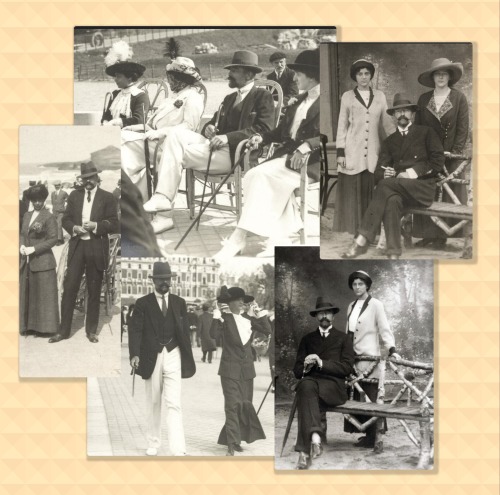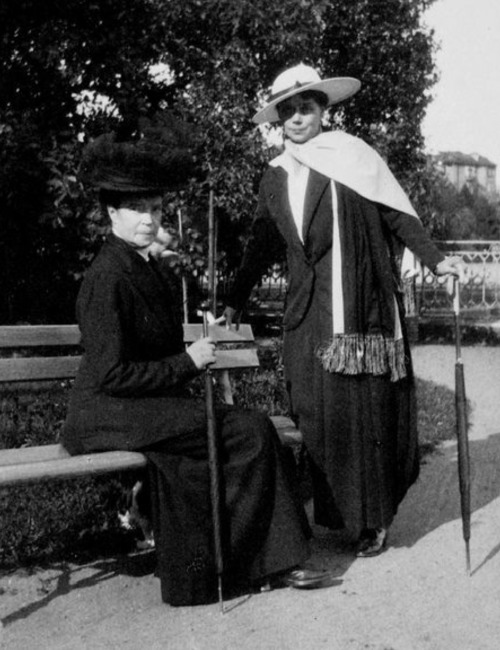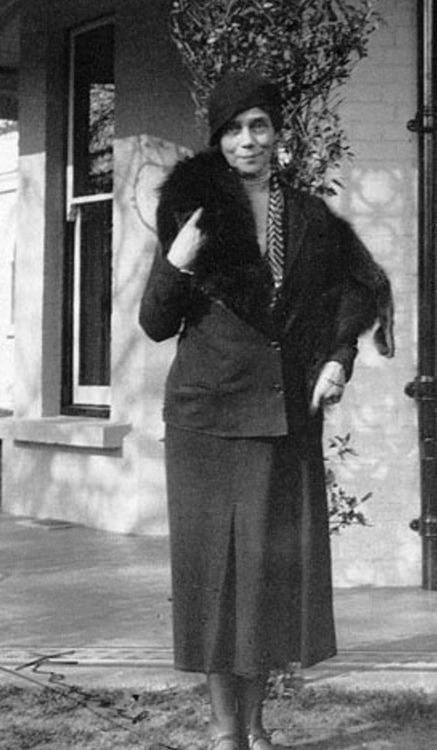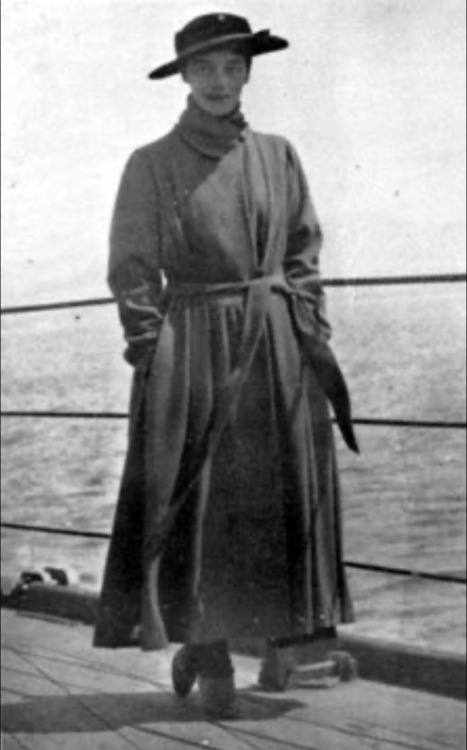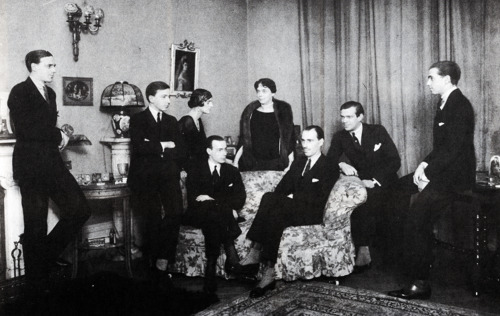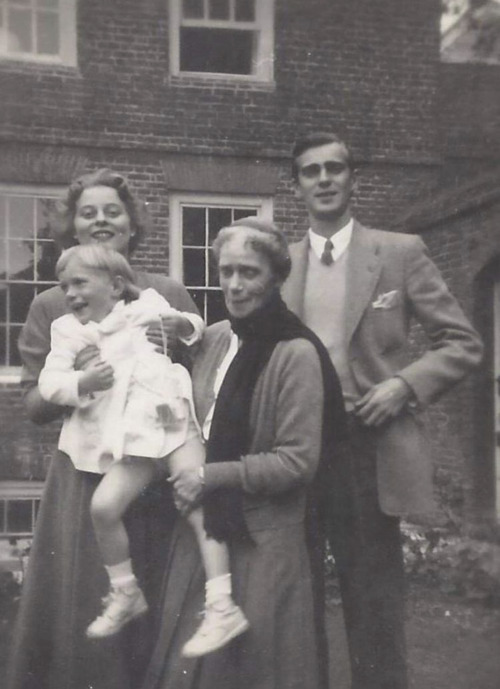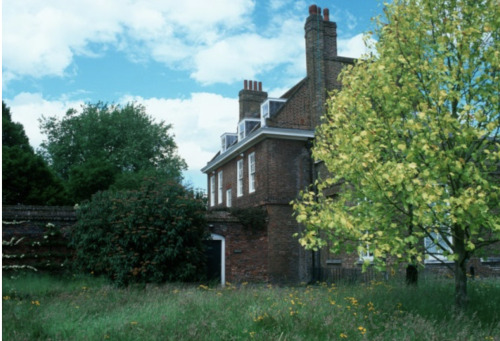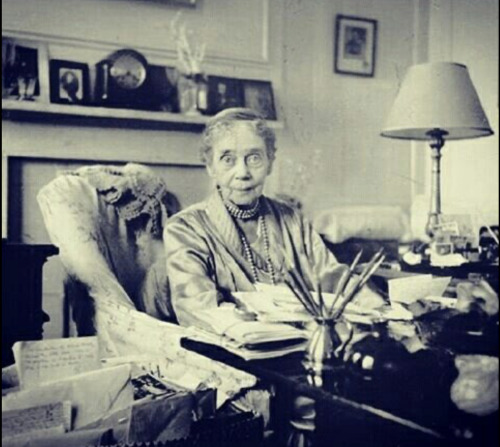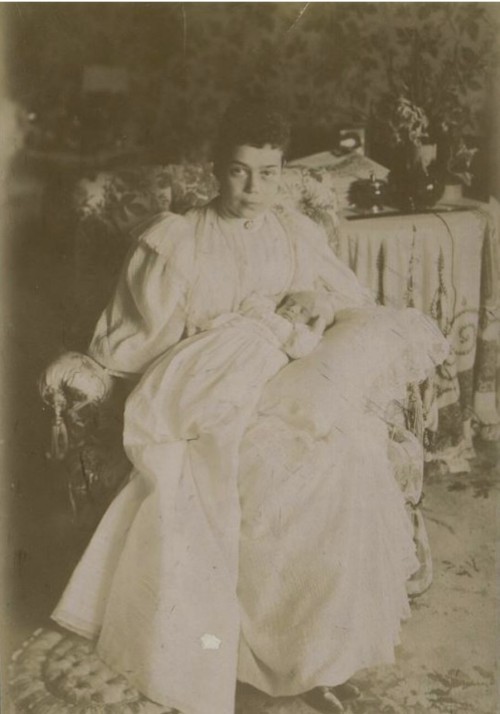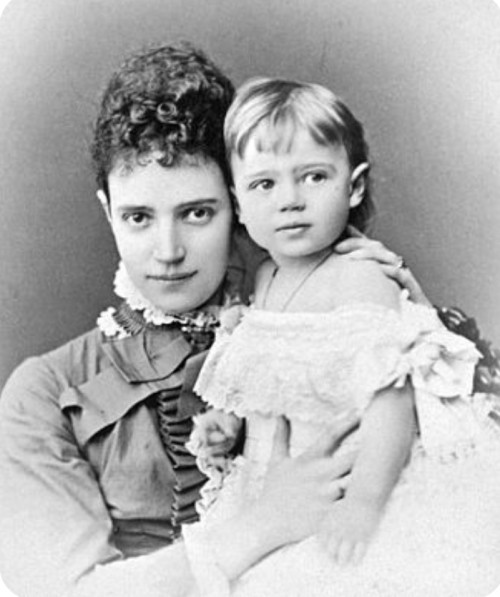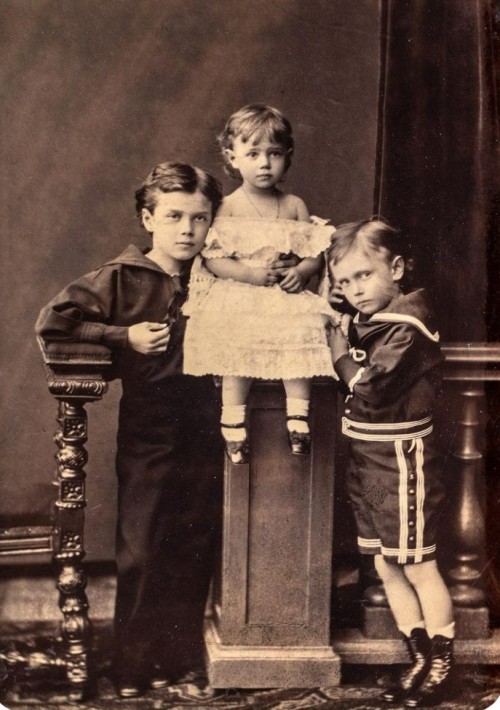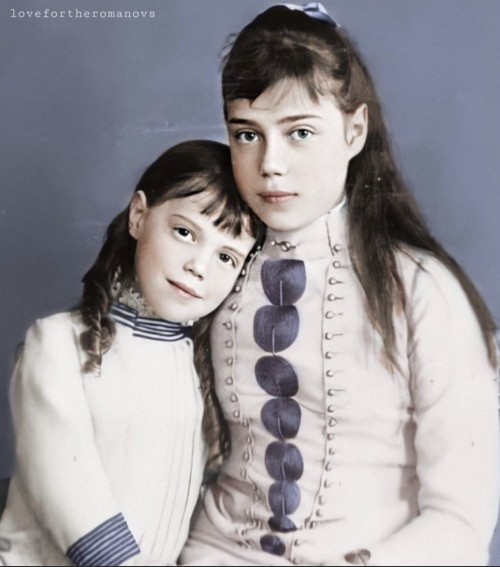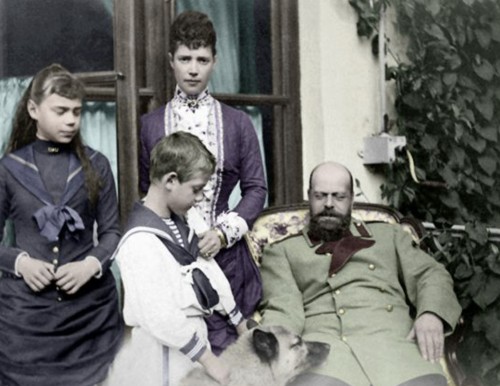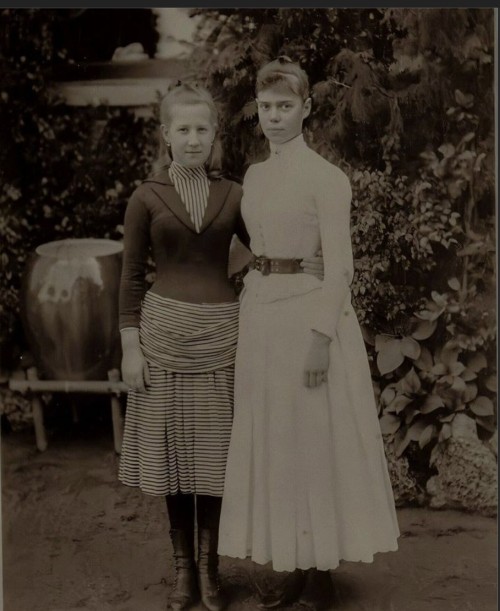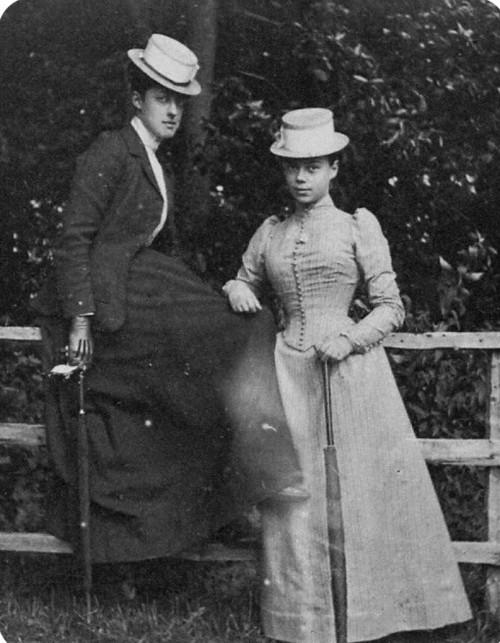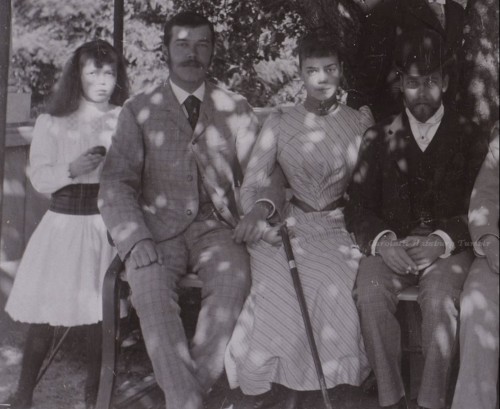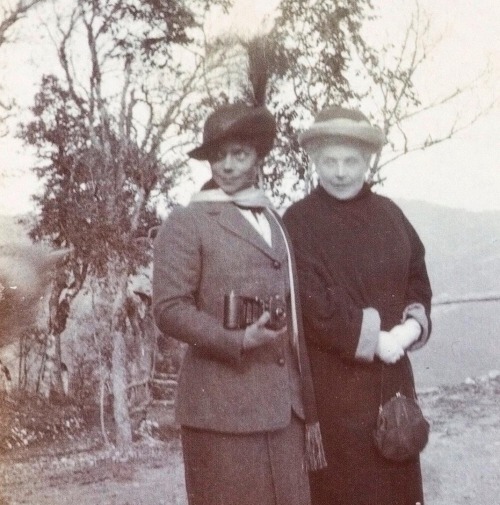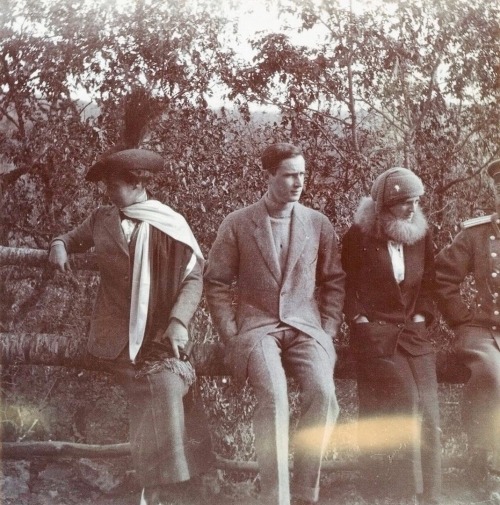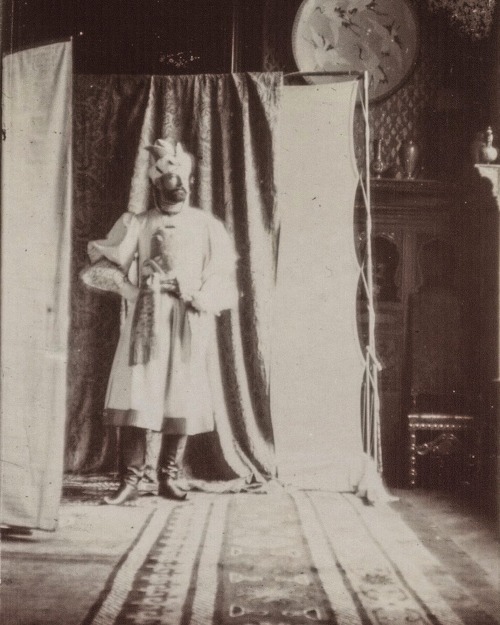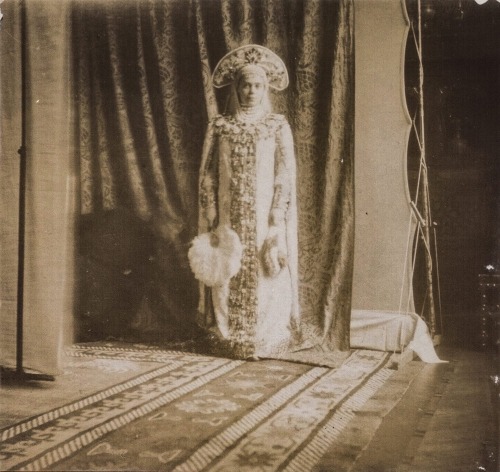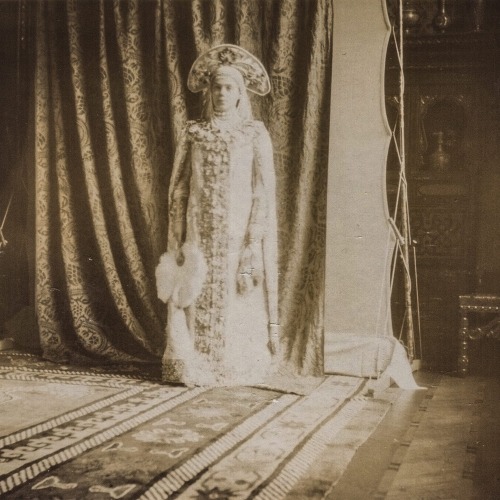#grand duchess xenia alexandrovna

Grand Duchess Olga Alexandrovna kissing her sister, Grand Duchess Xenia Alexandrovna; Gatchina, 1912.
His Imperial Highness Grand Duke Alexander Mikhailovich of Russia.
Most likely in Biarritz (at least in the exteriors) during those years he spent out of Russia “in disgust” after the crew of his ship mutinied. Luckily, he was off the ship tending to a very sick child; his sailors’ plans were to take him hostage. Nicholas II asked him to resign (basically to prevent a member of the ruling family from being kidnapped.) Sandro went ahead and took time off to do some of his favorite things (digging at Ai Todor, playing golf, buying himself new clothing, hats, shoes and attending dinner parties). He also decided to use the time to have a middle age crisis and get himself a mistress. I think that the fact that he decided to do so while Xenia was pregnant with their last child (and felt compelled to tell her) was in extremely poor taste.
This is very tongue in cheek…the events took place, but the order may not bear close scrutiny.
Post link
Grand Duchess Xenia Alexandrovna Romanova (1875 - 1960) - Part 3 of 3
When the revolution that removed the Romanovs from power broke out, Grand Duchess Xenia, Grand Duke Sandro, their children and a number of other Romanovs including the Dowager Empress, Grand Dukes Nicholas and Peter Nicholaievich and their families and entourages, headed for the Crimea (not necessarily together.) After a period of more or less pleasant exile, they were all placed under house arrest by the Bolsheviks, first at Ai Todor, Sandro’s house, and later at Dulber, Peter Nicholaievich’s palace. Their jailers’ intentions were to eventually liquidate them. In an interesting twist of fate, the group was liberated by the Germans. Just in the nick of time, George V sent a war ship to rescue his aunt. Dowager Empress Maria Feodorovna, not only insisted on taking her immediate family along, but filled the ship with other Russians seeking to escape the country.
Maria Feodorovna died in exile leaving the portion of her jewelry collection she had been able to get out of Russia and other limited assets to her daughters (in her will she provided for her servants as well, but not for her son Mikhail ‘s widow or for Mikhail’s son.)
Xenia and Sandro’s marriage was now beyond repair (although, contrary to what he says in his memoirs, there are letters indicating he tried to convince Xenia to go back to him.) Grand Duke Alexander established himself in Paris. He lived off his coin collection and wrote three fairly successful books before his death. Grand Duchess Xenia settled in England, under the “auspices” of her cousin George V. The King offered the Grand Duchess Frogmore Cottage at Windsor in 1925. This helped Xenia’s financial situation; she had no independent income and had no idea of how to administer whatever little she had; after she lost precious resources to a scam, King George assigned an administrator to look after Xenia’s finances. Upon the death of King George V in 1936, Xenia was advised that Frogmore Cottage was now intended for use only by the immediate royal family. Thus the grace and favour lodgings of Wilderness House at Hampton Court became her home until her death.
Through the rest of her long life (she lived to age 85) she was heavily involved in multiple charitable causes to benefit the Russian community in exile. She remained very close to her cousins Victoria of Wales, who visited frequently, as well as to Queen Maud of Norway and Marie of Greece and Denmark. They all pre-deceased her. Queen Mary was also a regular visitor. Xenia maintained a voluminous correspondence with her relations and friends disseminated through Europe.
At any given time, Xenia had one or more of her children, along with their spouses and their offspring, living with her. She also seems to have sent money to some of them periodically. Her older sons Andre and Feodor both suffered from tuberculosis. Xenia was a grandmother and great grandmother many times over.
Until the end of her days, she preserved her elegance, grace and impeccable manners. During Sandro’s final illness, she travelled to France with Irina to be at his bedside. He died in his daughter’s arms while Xenia was at a function being given in her honor. Xenia is buried with the husband she never divorced at Cimetière de Roquebrune-Cap-Martin in the South of France
Photographs: 1. Grand Duchess Xenia and her mother, the Dowager Empress Maria Feodorovna; 2. Xenia and her daughter Irina; 3. Grand Duchess Xenia; 4. Granduchess Xenia aboard the warship on which she left Russia forever; 5. Xenia and Sandro; 6. Grand Duchess Xenia with her fully grown children, Irina, Andrei, Feodor, Nikita, Dmitry, Rostislav and Vasily. 7. Xenia with her companion Mother Martha, a Russian nun who moved to Wilderness House in 1938. She was loyal and fiercely protective of Xenia. When Xenia died Mother Martha disappeared without a trace, along with the inheritance left to her by the Grand Duchess; 8. Xenia with her grandson Prince Alexander, Princess Margarita of Baden and their daughter Olga; 9. Wilderness House; 10. Grand Duchess Xenia Alexandrovna at her desk.
Post link
Grand Duchess Xenia Alexandrovna Romanova (1875 - 1960) - Part 2 of 3
Grand Duchess Xenia Alexandrovna and Grand Duke Alexander Mikhailovich got married in 1894. Unfortunately, her wedding was the last public event Tsar Alexander III attended. They married in August and the Tsar died in November. Xenia’s brother Nicky ascended to the throne of Russia as Nicholas II and married Princess Alix of Hesse, who became Empress Alexandra Feodorovna.
The two couples developed a very close relationship. Sandro held important posts during Nicholas II’s reign but he does not seem to have acquired the influence he should have as the Tsar’s brother-in-law, a relationship that placed him in extremely close proximity to the seat of power. The relationship between Nicholas and Alexandra and Sandro and Xenia was, indeed, a close one during the first few years of their marriage, yet it eroded slowly. The reasons for this are multiple and varied. Xenia and Sandro’s lifestyle was not as “sheltered” as Nicholas and Alexandra’s. Also, as the Empress gave birth to four beautiful girls in succession, Xenia’s first born daughter Irina was followed by six consecutive healthy sons. This could not have been a comfortable state of affairs for Alexandra who was eager to produce just one boy and seemingly could not. Although this was probably not the determinant factor in the cooling of her relationship with her sister in law, it must have contributed to it. What doomed the relationship was the fact that as the young Empress gained influence over Nicholas, his mother, the dowager, lost hers; Xenia sided with her mother. And let us not forget the gradual involvement of the imperial couple in matters related to mysticism (first in the guise of Monsieur Phillipe, and much later through the person of Rasputin) an interest not at all shared by Xenia and Sandro at that point.
Xenia and Sandro’s marriage seems to have been a love match. Given Grand Duke Alexander’s restless personality, it is no surprise that he would eventually find other love interests. The grand-ducal couple spent long periods of time outside of Russia, making the rounds of Biarritz, Cannes, etc with their ever expanding brood in tow. During Xenia’s pregnancy with her last child, Grand Duke Alexander fell in love with a Spanish/Italian woman we only know as Maria Ivanova, who was a frequent guest at the parties Xenia and Sandro gave. He decided to come clean to Xenia, and they opted to live “together but apart” for the sake of the children. They never got a divorce although Sandro asked Xenia for one several times through the years. The affair with Maria Ivanova lasted a number of years. Afterwards, there were other women in Sandro’s life; Xenia also took a lover (whose identity is not known for sure; there is speculation that this lover was an Englishman we know only as “Fane;” while others mention Prince Sergei Dolgoruky, an adjutant to the Dowager Empress - it is possible that these are two individuals Xenia had relationships with at different points in time.) Although both Sandro and Xenia were extremelly discreet, the state of their marriage was more or less an open secret. Empress Alexandra Feodorovna greatly pitied “poor litte Xenia with that terrible husband.”
Xenia and her mother remained very close. The Dowager Empress came to depend on Sandro and grew particularly close to Xenia’s children, especially beautiful, ethereal Irina. She derived all the enjoyment from these grandchildren that she could not from her son Nicholas’ offspring, since her contact with them was limited.
When World War I erupted, Xenia, Sandro, Maria Feodorovna, Irina, who by now was married to the eccentric Prince Felix Yusupov (one of the richest men in Russia) were all out of Russia. They hurried back home to serve their country for what they did not know would be one last time.
Photographs: 1. Illustration of different “scenes” from Grand Duchess Xenia Alexandrovna’s wedding to Grand Duke Alexander Mikhailovich (this was the last public event that Alexander III was able to attend due to his final illness.) 2. A very young Xenia (she must have been between 18 and 19 years old) holding her first born child and only daughter Irina); 3. Grand Duchess Xenia wearing a beautiful and very becoming boyarina costume; 4. Formal portrait of Grand Duchess Xenia Alexandrovna; 5. Grand Duchess Xenia Alexandrovna at sea 6. Xenia and Sandro with their seven children, Irina, Andrei, Feodor, Nikita, Dmitry, Rostilav and Vasily; 7. Grand Duchess Xenia and her children; 8. Xenia, her daughter Irina and her granddaughter Bebe; 9. Xenia and Sandro with friends; 10. Xenia, a very dapper Sandro and entourage in Biarritz
Post link
Grand Duchess Xenia Alexandrovna Romanova (1875 - 1960) - Part 1 of 3
Grand Duchess Xenia Alexandrovna was the fourth child and first daughter of Emperor Alexander III and his wife, Empress Maria Feodorovna. Her mother was eager to have a girl after her three boys, Alexander (who died as a baby), Nicky, and Georgy. Her parents and siblings received Xenia with great joy.
Xenia was born into the lap of luxury, during a time when her parents, who were not yet Emperor and Empress, had less social and state commitments and more time to devote to their children. Her childhood was genuinely idyllic. She grew up surrounded by cousins, who became playmates and lifelong friends (such as Marie, Princess of Greece and Denmark and Victoria of Wales) and even found a husband (Grand Duke Alexander Mikhailovich) among these childhood companions. European royalty of the time was almost all related, not only through Queen Victoria but also through Queen Louise and King Christian IX of Denmark, Xenia’s maternal grandparents, who were known as the “mother and father-in-law of Europe;” these extended families got together every year, and the royal children had a chance to form lasting relationships.
Xenia received the education typical of an aristocratic girl of her time, which concentrated on languages, drawing (she was as talented as her mother and sister Olga), and music. She took gymnastics lessons and was somewhat of a tomboy (despite her delicate and refined appearance.) She resembled her mother physically but her personality was not as gregarious; she was shy with strangers. In her letters, one can appreciate an intelligent, curious, friendly woman. All her life, she would be involved in many charitable causes (giving to others even when she was not in a position to do so anymore.) However, her generosity and good works did not seem to get as much publicity in her case as in that of other Russian female royals, perhaps because her roles were usually administrative and she did not have to wear a uniform.
By the time Xenia was sixteen, she knew she wanted to marry her cousin Alexander Mikhailovich. It is possible that the appeal of such a union resided not only in the dashing person of Sandro but also on the fact that the marriage would allow Xenia to stay in Russia rather than result in her contracting a dynastic union outside of it. Her parents made the couple wait until she was nineteen. Interestingly enough, Alexander was not the only Mikhailovichi who desired Xenia Alexandrovna’s hand in marriage. Sandro’s younger brother Sergei was also in love with the young grand duchess. Did Xenia ever questioned her choice of brothers later on in her life?
Xenia met and befriended Princess Alix of Hesse and by Rhine when they were both adolescents and they wrote to each other; it seems that Xenia did whatever she could to propitiate a union between the pretty princess and her brother Nicholas; the girls called each other “Chicken” (Xenia) and “Hen” (Alix). They would remain friendly even after their respective marriages, although the relationship eventually soured.
Photographs: 1. Grand Duchess Xenia Alexandrovna with her mother, Tsarevna Maria (she was born before her father became Tsar and her mother Tsarina); 2. Grand Duchess Xenia with her older brothers, the Grand Dukes Nicholas and George; 3. Grand Duchess Xenia with her younger brother Grand Duke Michael Alexandrovich (I wish I knew the dog’s name); 4. Grand Duchess Xenia and her younger sister Grand Duchess Olga (the only one of Alexander III’s children to be born “in the purple;” 5. Alexander III and Maria Feodorovna with Xenia and Misha; 6. A nubile Xenia wearing Russian court dress; 7. Life- long friends Grand Duchess Xenia and her cousin Princess Marie of Greece and Denmark (the future “Grand Duchess George” after her marriage to Grand Duke George Mikhailovich who was an older brother of Xenia’s husband, Grand Duke Alexander Mikhailovich); 8. Grand Duchess Xenia and her cousin, Victoria (”Toria”) of Wales; 9. From left to right, Olga, Nicholas, Xenia and the future George V; 10. Empress Maria Feodorovna (looking incredibly young) and Grand Duchess Xenia with Grand Duke Alexander (Sandro) Mikhailovich
Post link
More gems shared by https://vk.com/lastromanovs
Grand Duke Alexander and Grand Duchess Xenia posing in costume for their official photographs 1903
Post link

